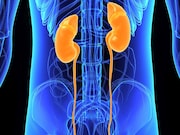Five groups of patients with distinct features and outcomes identified using machine learning approach
FRIDAY, March 15, 2019 (HealthDay News) — An archetypal approach can identify the diagnostic and prognostic features associated with transplant glomerulopathy, according to a study published online March 14 in the Journal of the American Society of Nephrology.
Olivier Aubert, M.D., Ph.D., from the Paris Translational Research Center for Organ Transplantation, and colleagues used an archetype analysis of comprehensive pathology findings and clinical, immunologic, and outcome data to identify distinct patient groups among consecutive kidney transplant recipients who presented with a diagnosis of transplant glomerulopathy.
The researchers identified 552 biopsy samples from 385 patients with transplant glomerulopathy among the 8,207 posttransplant allograft biopsies performed during January 2004 through December 2014 (incidence, 6.7 percent). There was a median of 33.18 months from transplant to transplant glomerulopathy diagnosis. At three, five, seven, and 10 years after diagnosis, kidney allograft survival rates were 69.4, 57.1, 43.3, and 25.5 percent, respectively. Five transplant glomerulopathy archetypes characterized by distinct functional, immunologic, and histologic features and associated causes and with distinct allograft survival profiles were revealed using an unsupervised learning method approach. Significant differences in allograft outcomes were seen for these archetypes, with survival rates five years after diagnosis varying from 22 to 88 percent. An online application was built based on these results.
“Whether an archetype-based management of patients with transplant glomerulopathy would ultimately offer any benefit for the patients requires further prospective validation,” the authors write.
Copyright © 2019 HealthDay. All rights reserved.








